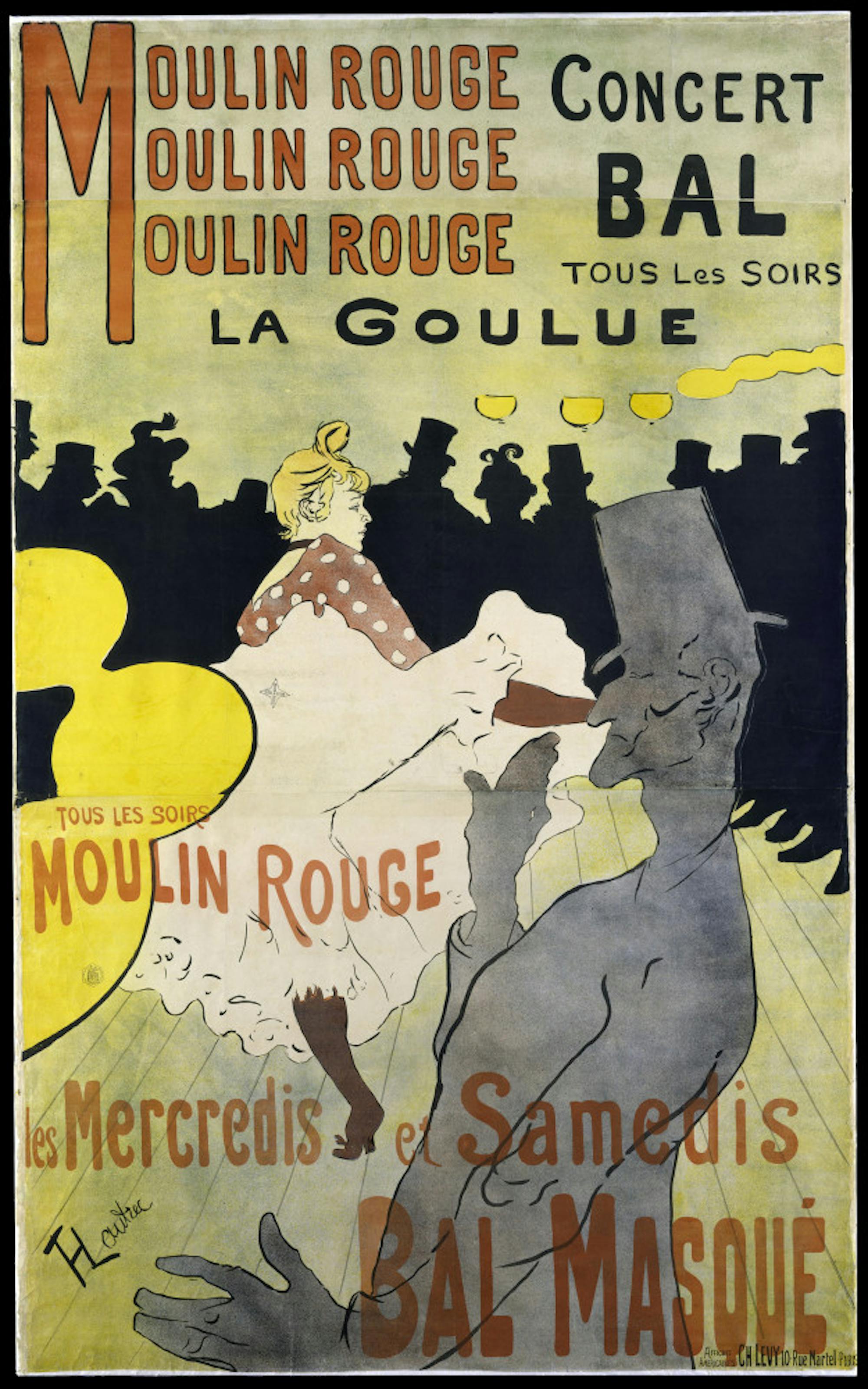Given the recent fire that destroyed much of Notre Dame and its precious artifacts, the whole world is looking to Paris. Amidst all the devastation, there is still much to Parisian art and culture that one can appreciate right in Boston.The Museum of Fine Arts Boston (MFA)’s current exhibition in collaboration with the Boston Public Library, “Toulouse-Lautrec and the Stars of Paris,” features the original prints of the most iconic imagery of 19th-century Paris. Often depicting cabarets, bars and cancan dancers, Henri de Toulouse-Lautrec's prints became synonymous with Paris and the people he depicted. Noted works include his legendary poster for "Le Chat Noir," the first modern cabaret, and of the singer Aristide Bruant in his historic cabaret outfit. However, the exhibition shines in Toulouse-Lautrec’s more intimate drawings and in the the vast array of works by his contemporaries. Toulouse-Lautrec's works are paired with those of Pierre Bonnard, Mary Cassatt, Edgar Degas, John Singer Sargent, as well as artists such as Picasso, all of whom inspired major artists of his time and beyond.
Another striking aspect of the show is the general ambiance of the exhibition space. Encore Boston Harbor, the casino set to open in the next coming weeks in Everett, Mass., is among the exhibition's sponsors. The dark walls and mood lighting parallel the ambiance of a bar. Another aspect of the Encore sponsorship is that they are granting free MFA admission to Everett residents, which is a nice gesture. The gallery space is not your typical white box, but the walls are painted deep jewel hues, ranging from navy to green to red, which seems much more reminiscent of smoke-filled, dimly lit 19th-century bars. This seems fitting, given that the exhibition centers around six key figures in Toulouse-Lautrec’s work and Paris at the time. These include Yvette Guilbert, Jane Avril, Aristide Bruant, Marcelle Lender, May Belfort and Loïe Fuller, all of whom drew mass audiences during their time in Montmartre. Toulouse-Lautrec was often commissioned by these stars in their early career stages, and the prints were what made these women instantly recognizable — Toulouse-Lautrec was not only an exceptional artist but also an exceptional PR agent. The use of celebrities as the center of the exhibition raised both issues and advantages. This structuring of the show relied heavily on these individuals' biographies, which sometimes shifted the focus from the visual to the narrative aspects of these works. Many of the most interesting and compelling works of the show were not the huge lithographs but the stone that the artist used and his small paintings and studies. The stone in particular was very hard to find, as noted by one of the security personnel.
It is still rather amazing, and quite rare, to see these huge prints, some in their first set of reproduction. The exhibition does a great job of contextualizing and explaining printing, especially why some prints are more valuable than others. So much of Toulouse-Lautrec’s style is shaped by his creative medium, and this is further emphasized when juxtaposing his painting with his prints, the latter of which tend to be more modern and dynamic.
“Lavishly illustrated with reproductions of iconic images along with rarely seen sketches, and illuminated by insightful essays, this volume shines a spotlight on the stars of the Paris stage, the birth of celebrity culture, and the brilliance of the artist who gave them enduring life,” the press release for the show states.
While the show does delve deeply into the lives of these celebrities, it does so at the expense of the more critical and not-so-child-friendly aspects of the Paris underground. While the exhibition discusses the lesbian bars Toulouse-Lautrec often frequented, it does not really get into the social and gender dynamics and changes at play during this dynamic period of French history.
This issue particularly arose with the wall text accompanying Mary Cassatt’s “In the Loge” (1878). Cassatt is one of the only female artists featured in the show and it is worth attending the exhibition to see this work alone. The wall text suggests that the male figure is gazing at the female figure, while the female figure is gazing upon someone else. However, the work is often analyzed as a major resistance towards the male gaze, as the female figure is not presenting herself to the viewer, and the viewer is being spied on just as she is. Like any art exhibition, it is essential to note that every work is more than the wall text might suggest.
“Toulouse-Lautrec and the Stars of Paris” presents an amazing scope of rare works that is assuredly worth seeing. For anyone interested in Paris, its history, its fashions, or art in general, the exhibition has more than enough content to intrigue any viewer. The ambiance alone warrants its own review. This writer fell in love with a new artist, Robert Earle Henri, while visiting this show, which is a testament to the cultural power of the artist and his respective style, and how art can change the course of culture. It can lift some and ruin others. It is also a testament to how print culture, something we often take for granted, can influence higher forms of art, such as painting, and seriously change the course of the art that follows it. Toulouse-Lautrec was one of those incredibly influential artists whose talent did all that and so much more.
"Toulouse-Lautrec and the Stars of Paris" will be on view until Aug. 4 and is free for Tufts students.






